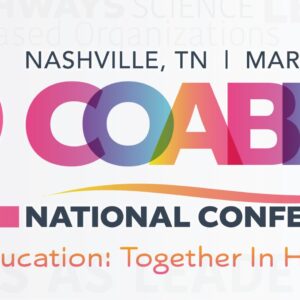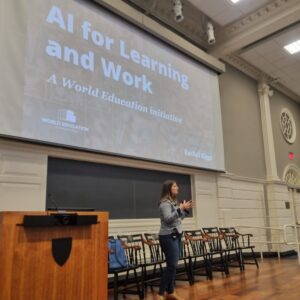By Elisabeth Grinder McLean, Assistant Teaching Professor and Carol Clymer, Co-director Goodling Institute for Research in Family Literacy
The COVID-19 pandemic affected our nation in many ways as stay-at-home orders from states were announced with startling speed. Many programs serving adults and families wrestled with decisions about how to stay in touch with learners and deliver services. And parents (1) in adult education and family literacy programs and throughout the country were challenged with knowing how to support their children’s remote learning experiences as schools closed. Parent engagement with their children’s education and with schools became vital during the pandemic. However, the parents that our programs typically serve (low-income, immigrants, people of color) were disproportionately harmed by the pandemic and often overwhelmed by the difficulty of connecting to their children’s teachers and schools due to limited access to the internet and digital devices and concerns about basic health and safety. Fortunately, family literacy programs have been able to support the continued learning of adults and their children during this unprecedented time. We can learn a great deal from these efforts.
Family literacy programs have existed for decades and primarily enroll families with limited economic, education, and literacy resources. These programs provide services to help parents improve their educational attainment, learn about the education and development of their children and connect to their teachers and schools, and engage in interactive literacy activities with their young or school-age children. Unfortunately, the number of family literacy programs has diminished due to decreased federal and state support, yet many organizations have sustained programs by cobbling together funding from a variety of sources (2).
The COVID-19 pandemic has been a stark reminder about how critical family literacy programs can be to adult learners who are parents. As states’ stay-at-home orders were issued and schools adjusted to uncharted instructional territory, parents were tasked with monitoring and guiding their children’s participation in remote learning. Anecdotal evidence from webinars (3) to help adult education providers adjust to the challenges of COVID-19 indicated that many parents struggled with these new responsibilities, and adult education programs had to provide some type of assistance to help parents support their children’s learning at home (5). Fortunately, family literacy programs were already positioned to work with parents and children and could more easily help them address challenges about “what do I do about school” during the pandemic. Parents enrolled in family literacy programs that were able to operate remotely could continue to learn about how to help their children with schoolwork and support their academic learning, engage in fun learning activities with their children, as well as continue their own learning.
We have seen very clearly how essential family literacy programs are for parents in adult education, and we have also observed the tremendous digital divide that exists between lower-income and higher-income communities that have reliable internet access, computers, tablets, and smart-phones. For example, in U.S. households that make less than $30,000, more than half do not own a smartphone, have access to broadband services, or own a computer (4). During the pandemic, family literacy programs have assisted parents and children to overcome the digital divide in many ways, such as providing access to the internet and free hotspots; lending digital devices; transitioning to remote instruction so parents could continue their learning; supporting connections to schools to fulfill academic requirements of their children; engaging in remote parent-child interactive literacy activities; and providing information about online resources so family members can continue learning. For example, the Goodling Institute posted an extensive list of online resources for programs and families to use for learning at home. Increased funding of family literacy programs is crucial so that we are better prepared to support parents and children as we navigate this “new normal.” We have learned from the COVID-19 experience that family literacy programs can help lead the way as we adapt to new learning environments for parents and children—particularly those who are most vulnerable.
(1) In this document, “parent” includes other adult caregivers such as grandparents.
(2) Clymer, C., Toso, B.W., Grinder, E., Sauder, R.P. (2017). Changing the course of family literacy. University Park, PA: Goodling Institute for Research in Family Literacy, Pennsylvania State University.
(3) Goodling Institute for Research in Family Literacy (April 2020). Remote instruction for family literacy programs: Dealing with COVID-19 challenges in the virtual classroom. https://www.youtube.com/watch?v=_3wgfOmgqq0&feature=youtu.be; Goodling Institute for Research in Family Literacy (March 2020). Remote instruction ideas for William Penn Foundation family literacy initiative grantees. Recording not public; National Skills Coalition, National Coalition for Literacy, and Coalition on Adult Basic Education (June 2020). Adult Education Forum on Capitol Hill’s Covid-19 response. Not recorded.
(4) Anderson, M. & Kumar, M. (2019). Digital divide persists even as lower-income Americans make gains in tech adoption. Pew Research Center. https://www.pewresearch.org/fact-tank/2019/05/07/digital-divide-persists-even-as-lower-income-americans-make-gains-in-tech-adoption/
(5) Goodling Institute for Research in Family Literacy (April 2020). Remote Instruction Resources for Family Literacy Programs, updated 7/16/20. https://sites.psu.edu/goodlingresources/files/2020/07/Remote-Instruction-Resource-Ideas-for-FL-update-7-16-20.pdf




